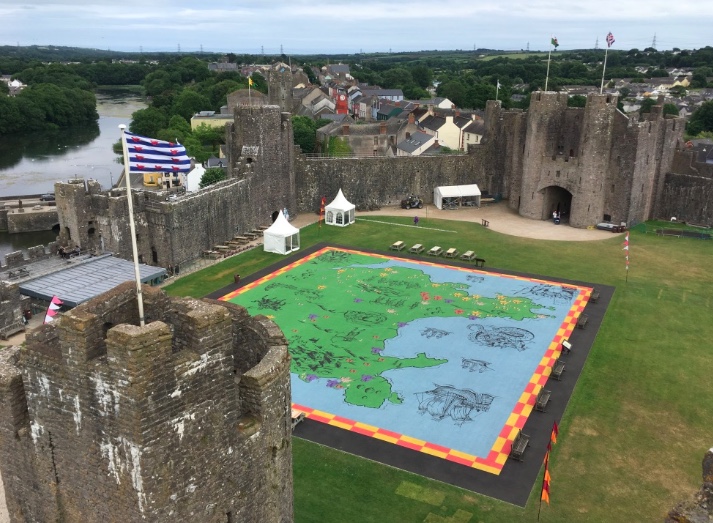This is the interior of the keep at Pembroke Castle.

For those of you who aren’t history nuts, the keep was a castle’s fortification of last resort. If the outer walls fell, everybody (or at least everybody important) would withdraw into the keep and bolt the doors, and, in the case of Pembrokeshire Castle’s keep, retract the second-story drawbridge that was the only means of ingress. (It seems to me that this would only prolong the inevitable—as you’d now be boxed up in a large stone building with no exits, no water, and probably no bathroom—but presumably this gives you the option of falling on your own sword instead of the sword of the guy who just stormed your curtain wall.)
Here’s part of the Great Hall:

Pembrokeshire Castle is your bog-standard Marcher Lord castle. This means that in the early eleventh century, the Normans came along, gave the native Welsh the boot, erected a castle (probably originally a motte-and-bailey with a wooden keep, replaced sometime in the following century by a stone model), and then added to it over the following centuries. At various times they lost it and took it back from the native Welsh. It bopped back and forth between the Roundheads and Cavaliers during the Civil War. And then the Victorians got their hands on it.
Here’s the view from the top of that aforementioned keep. The map in the middle of the green is of Pembrokeshire, Wales; the red castles on the map are Welsh, the yellow castles are Norman, and we never did figure out what the purple ones are other than not on the key.
Incidentally, Pembroke Castle is in southern Pembrokeshire, where the accents sound English, at least to the untrained American ear. In some pockets of northern Pembrokeshire, you still find Welsh spoken. This is a legacy of those Normans coming along and booting the native Welsh north—still evident a thousand years after the fact.

I thought these safety notices were pretty cute.
